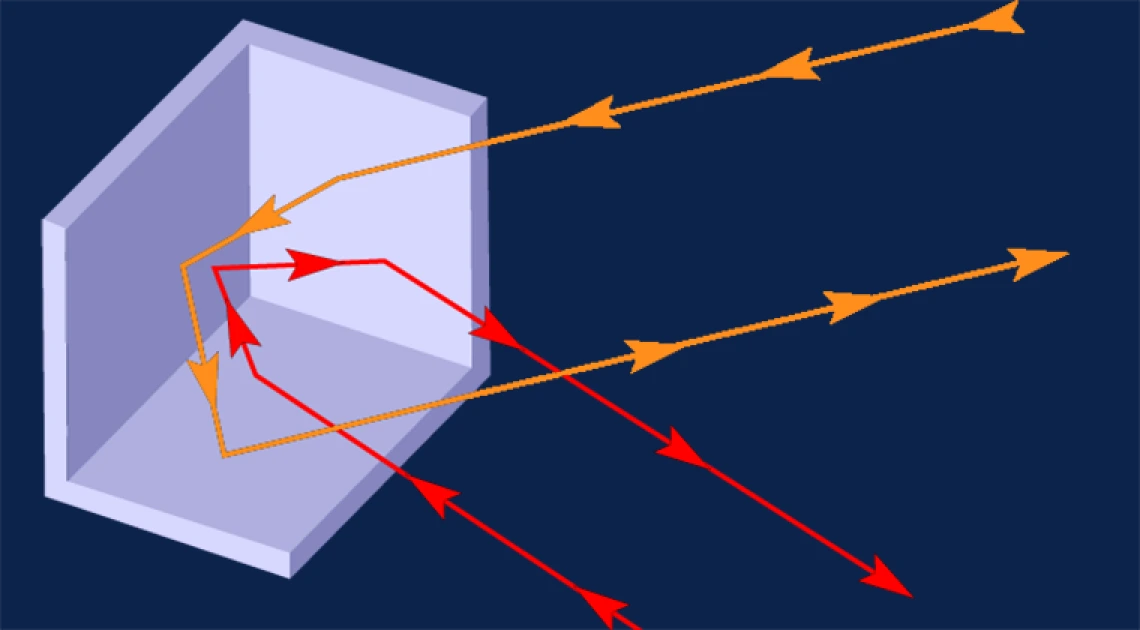Tech Blog: Novel Cube-Corner Retro-Reflector Increases Accuracy in Long Distance Measuring

A retro-reflector is a device or surface that is capable of reflecting light back to its source with minimal scattering. Retro-reflectors take many forms, with the most common and simple forms being reflective additions to road surfaces, signs, clothing and vehicles. These forms of retro-reflectors can be found in a variety of products across multiple industries including automotive, factory automation, welding, hydraulics, plastics, rubbers, and semiconductors. Applications such as laser range finding and satellite tracking require a more detailed retro-reflector system. Unfortunately, these systems can only provide between twenty-five and fifty percent of the source irradiance based on their use of either a non-polarizing beam splitter or a polarizing beam splitter, both of which have resulted in overly complex and inefficient systems.
With this problem in mind, UA’s Russell Chipman, Ph.D., and Karlton Crabtree, Ph.D., worked to create a novel design for a retro-reflector that increases the reflection efficiency while reducing the complexity of the system. Chipman and Crabtree, a professor and former research scientist respectively, within the College of Optical Sciences, developed a cube-corner retro-reflector that includes three mutually perpendicular reflecting panes.
These panes are arranged as a pyramid, which causes a polarization state of a ray exiting the cube corner retro-reflector to be orthogonal to its initial polarization state for all linear polarization orientations.
As a result, nearly one hundred percent of light hitting the retro-reflector is returned to the detector. And because of that, it uses lower light power compared to traditional retro-reflector systems, making it ideal for applications requiring long distance measurements.
Amy Phillips, TLA’s optical sciences licensing manager who is working to bring the invention to the marketplace, spoke of the advantages this technology offers for accurate distance targeting, saying, “the return signal is very efficiently reflected back to the source, which means the user can either increase the distance between the target and the light source, or use a less powerful light source for a given distance, and still have the same signal-to-noise ratio.”
Phillips further endorsed the technology saying that it is an excellent fit for alternative applications like laser range finding, satellite tracking, and counting objects on a conveyor belt.
To learn more about this technology, please visit:
Polarization Coupling Cube-Corner Retro-Reflectors (UA06-008)
Learn more about other related imaging and optics technologies from Tech Launch Arizona,

